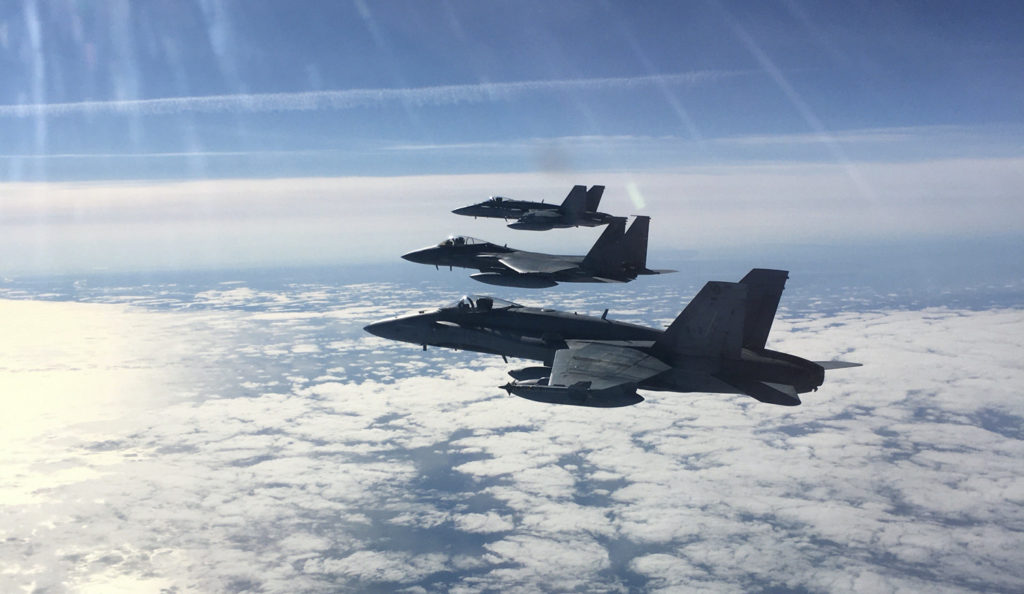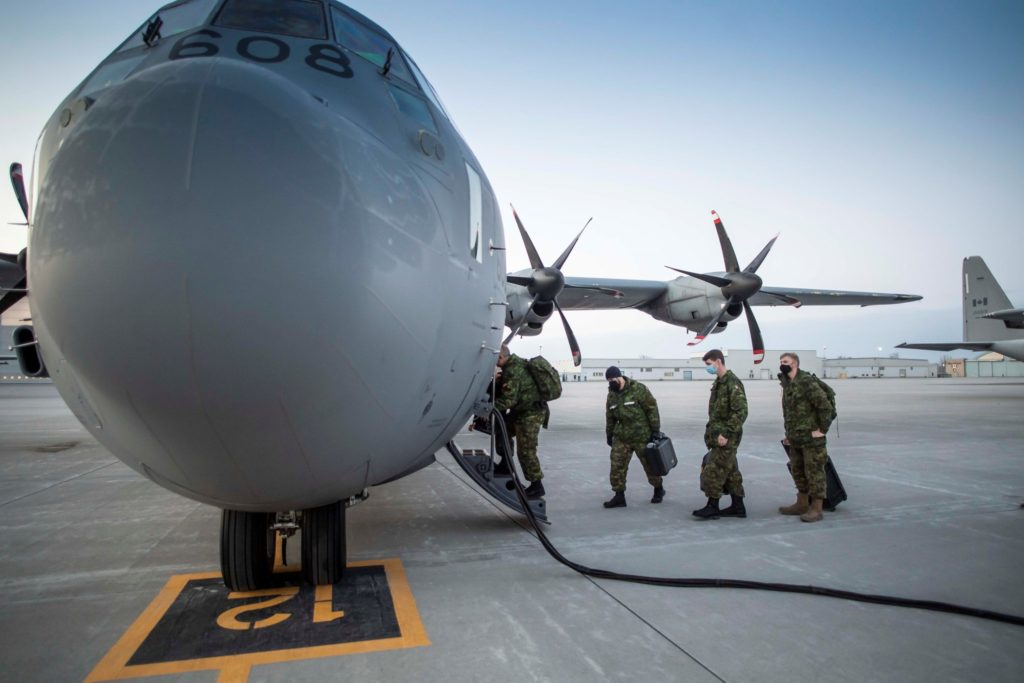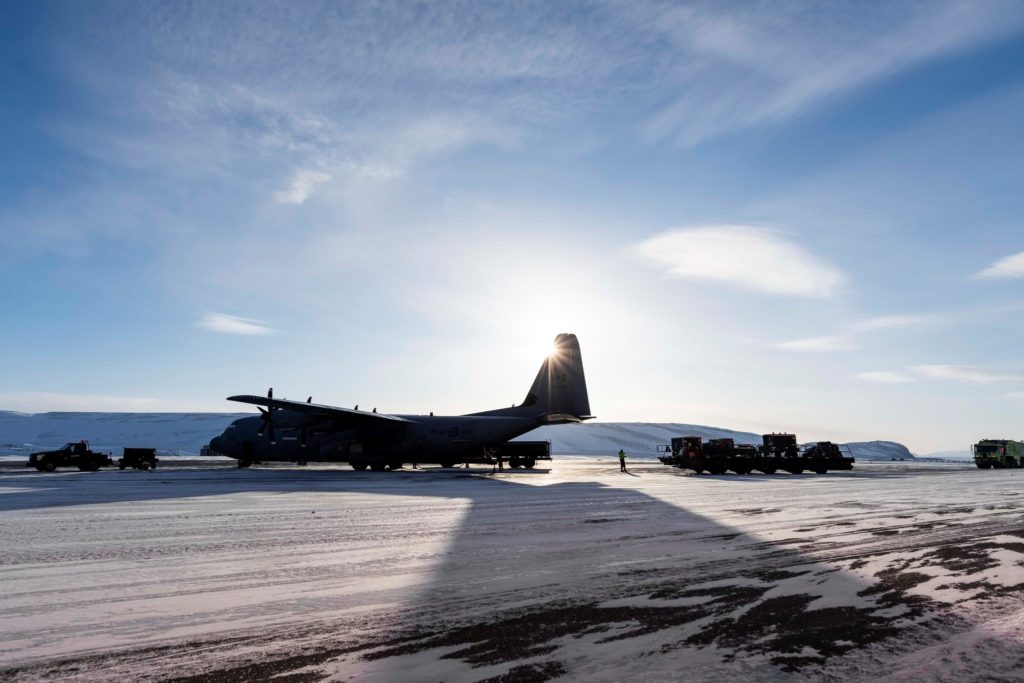Estimated reading time 5 minutes, 45 seconds.
A wide array of United States and Canadian fighter jets, tankers, and other military aircraft will be part of a NORAD air defense exercise in the Arctic next week.
The training event, known as Amalgam Dart, will be conducted from March 20 to 26 from operating bases across the north, including Whitehorse, Yukon; Yellowknife, N.W.T; Goose Bay, Newfoundland; Iqaluit, Nunuvut; and Thule, Greenland.

Participating Royal Canadian Air Force (RCAF) aircraft include CF-188 Hornet fighter jets from 401 Tactical Fighter Squadron (TFS) at 4 Wing Cold Lake, Alberta, and 425 TFS at 3 Wing Bagotville, Quebec; and CP-140 Aurora maritime patrol and surveillance platforms from 404 Long Range Patrol and Training Squadron and 405 Long Range Patrol Squadron — both at 14 Wing Greenwood, Nova Scotia.
A CC-130J Hercules from 436 Transport Squadron at 8 Wing Trenton, Ontario, will provide tactical airlift capability for the exercise, while a CC-150T Polaris from 437 Transport Squadron, also at 8 Wing, will provide air-to-air refueling.
442 Transport and Rescue Squadron, based at 19 Wing Comox, British Columbia, and 103 Search and Rescue Squadron from 9 Wing Gander, Newfoundland and Labrador, will position CH-149 Cormorants and crew at Canadian Forces Station Alert in the High Arctic to provide a standby search-and-rescue (SAR) response.
A second SAR resource will also be available if necessary. Although not officially part of Exercise Amalgam Dart, a CC-130H Hercules from 424 Transport and Rescue Squadron at 8 Wing will be conducting training from Iqaluit. “In event SAR is required for the exercise, it will be in a position to provide rapid response,” said a spokesperson with 1 Canadian Air Division.

United States Air Force participation will include National Guard F-16 Fighting Falcons from Buckley Air Force Base in Colorado and Duluth Air National Guard Base in Minnesota.
Air-to-air refueling assets include KC-10 Extenders from Travis Air Force Base (AFB) in California and Joint Base McGuire-Dix-Lakehurst in New Jersey; KC-135 Stratotankers from Fairchild AFB in Washington, MacDill AFB in Florida, and Bangor Air National Guard Base in Maine; and a new KC-46 Pegasus the 22nd Air Refueling Wing at McConnell AFB in Kansas.
The Joint Air Reserve Station in Saint Paul, Minnesota, is providing a C-130 Hercules for tactical airlift.
“Previously, NORAD has defended against the Arctic’s use as a gateway to access North America. While this threat has not disappeared, today major global actors are determined to exert their influence in the region in pursuit of their respective national interests,” said MGen Eric Kenny, commander of Canadian NORAD Region. “NORAD is committed to working with its allies and partners to strengthen global stability and security as we now face a much broader range of threats that are testing our security, and require innovative and tailored defences. Exercise AMALGAM DART provides both Canadian and U.S. forces the opportunity to maintain and build on our capabilities.”

In a statement, the RCAF said NORAD routinely conducts exercises for a number of potential scenarios such as airspace restriction violations, hijackings, and responses to unknown aircraft. “This air defense exercise provides us the opportunity to hone our skills as Canadian and U.S. forces operate together with our allies and partners in the Arctic.”
To mitigate the possible spread of COVID, contact with local populations will be limited “to the greatest extent possible” and aircrews, maintainers, and support personnel will follow local health protocols. In addition, U.S. military personnel are required to complete two negative COVID-19 tests, separated by a minimum of five days, before traveling to Canada.








